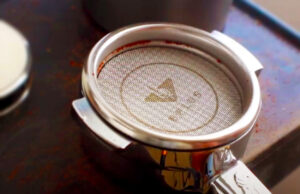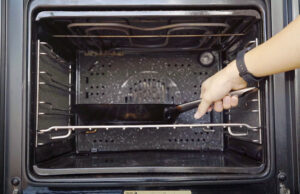Some of our posts contain affiliate links. If you buy through our links, I may earn a small commission at no extra cost to you.
Coffee Maker Not Brewing: Troubleshooting Tips
As a self-proclaimed coffee expert and coffee fan, there’s nothing more disappointing than waking up in the morning ready to enjoy a rich, flavorful cup of coffee, only to find that your trusted coffee maker won’t brew a single drop. Don’t worry, fellow coffee lovers. I’m here to help you find your way through the maze of fixing tips to get your coffee maker working again and get back to your morning routine.
In this article, we’ll look at some of the most common problems with coffee makers that don’t work and try to figure out what might be wrong. We’ll figure out what’s wrong with your machine and give you real ways to get it working again, whether it’s completely silent or just stops working sometimes.
From easy problems like clogged filters or mineral buildup to more complicated electrical problems, we’ll talk about a variety of troubleshooting methods that will help you figure out what’s wrong and fix it quickly. So grab your favourite mug, take a seat, and let’s go on a trip to bring your beloved coffee maker back to life so that your mornings again smell and taste like freshly brewed coffee.

1. Check the Power and Connections
If your coffee maker isn’t making any coffee, one of the first things to do is check the power source and connections. Even though it may seem clear, sometimes the problem is caused by a loose or broken power cord. What you can do is:
Source of power: Make sure your coffee maker is properly plugged into a working power source. Plug something else into the outlet to see if it works.
Power Indicator: Check to see if the light on the coffee maker that shows that it is on. If it doesn’t, it could mean that the power source or the machine itself is broken.
Circuit Breaker: If the coffee maker is linked to a circuit breaker, make sure the breaker hasn’t tripped. If you need to, reset it.
Power line: Check the power line for damage or fraying that you can see. If you notice anything wrong with the cord, you should change it right away for safety reasons.
2. Look at the Water Flow and the Water Reservoir
The next step is to make sure that the water tank and water flow are working well. If there isn’t enough water or if water isn’t getting to the brewing area properly, the coffee maker won’t work. To figure out what’s wrong, try these steps:
Water Level: Check the water tank to make sure it has the right amount of water. If it’s too low, the coffee maker might not start to make coffee.
Water Quality: If the water in your coffee maker isn’t good, it won’t work as well. If the water is too hard or has too many minerals, it can build up and cause clogs. To avoid these problems, you might want to use purified or bottled water.
Water entrance: Check the water entrance to make sure it isn’t clogged. Use a clean cloth or a small brush to get rid of any dirt or mineral layers that are blocking the flow of water.
Drip System: If your coffee maker has a drip system, make sure it is aligned with the brewing area. If the pipes aren’t lined up right, water can’t get to the ground.
3. Make Sure the Filter and Coffee Grounds are in the Right Place
To work right, a coffee maker needs to have the filter and coffee grounds in the right place. If they are not in the right place, it can slow down the process of making. Follow these steps to make sure the position is right:
Filter Compatibility: Check to make sure you are using the right type and size of filter for your coffee maker. If you use the wrong filter, it might not fit well and slow down the boiling process.
Position of the Filter: Make sure the filter is in the right place in the filter basket or stand. It should fit well, with no holes or other problems.
Coffee Grounds: Make sure you are using the right amount of coffee grounds according to the guidelines from the manufacturer. If you use too few or too many grounds, it can change how the coffee is made.
Distribution of Grounds: Make sure the coffee grounds are spread out evenly in the filter. If the coffee is spread out unevenly, it can be extracted unevenly, which can make the coffee weak or bitter.
4. Clean the Coffee Maker and Remove the Scale
Minerals, oils, and dust can build up in the coffee maker over time, which can make it work less well. To keep your machine in good shape, you must clean and descale it regularly. Here’s what you need to do:
Cleaning the Outside: Use a damp cloth to wipe the outside of the coffee maker clean of any dirt, spots, or spills. Don’t use rough cleaners that could scratch the surface.
Cleaning the Water tank: Take out the water tank and wash it with warm, soapy water. Before putting it back in the machine, rinse it well to get rid of any soap residue.
Scaling Solution: Make a descaling solution by following the directions that came with the coffee maker. Most of the time, you need to mix a descaling agent with water. Make sure to use a descaler made just for coffee makers to keep the machine from breaking.
Run the Descaling Cycle: Pour the descaling solution into the water tank and start a brewing cycle without any coffee grounds. This lets the solution move around the internal parts and clean off any mineral buildup. Follow the directions from the manufacturer for how long the descaling cycle should last.
Rinse the Machine: Once the descaling cycle is done, run the machine through a couple of brewing rounds with clean water to get rid of any descaling solution that might still be in the machine. This step is very important to make sure that none of the descalers is left in the machine.
5. Check That the Settings and Functions for Brewing are Correct
Most coffee makers have different brewing settings and pre-programmed features that can change how the coffee is made. If your coffee maker isn’t making coffee, check these settings and make any needed changes. What you can do is:
Brewing Temperature: Check the settings for the brewing temperature and make sure they are at the amount you want. If the temperature is too low, the coffee might be weak or not get enough flavour out of the beans.
Brew amount: Some coffee makers let you choose the amount of your brew. Make sure the strength of the brew is set the way you like it. Changing the strength can change how the coffee is extracted and how it tastes in the end.
Programmable Functions: If your coffee maker has programmable features like automatic shutoff or delayed making, make sure they are set correctly. If you don’t programme the coffee maker right, it might not start making at the time you want.
6. Check the Brewing Mechanism and Reset It
The part of a coffee maker that makes the coffee can sometimes have problems that keep it from working right. Here are some steps on how to check the brewing device and reset it:
Lid for the brewer: Make sure the lid for the brewer is closed tightly. Most coffee makers have a safety feature that stops the machine from making coffee if the lid is not closed and locked in place.
Brew Basket: Look at the brew basket and make sure it is in the right place in the machine. If it is not lined up right, it can mess up the process of making.
Reset Function: Some coffee makers have a “reset” or “restart” button that lets you start over. Find out if your machine has this function and how to reset it by looking at the user manual. Resetting the machine can help fix small problems and get it back to working normally.
7. Fix Any Problems That Might Come up with the Heating Element
The heating part is what gets the water to the right temperature for making coffee. If it doesn’t work right or breaks, the coffee maker might not make any coffee at all. Think about the following steps to fix problems with heating elements:
Heating Plate: Check the coffee maker’s heating plate or base to make sure it is clean and free of dust and dirt. The cooking process can be messed up by a dirty or broken heating plate.
Heating Element Test: If you think the heating element is broken, you can use a voltmeter to do a simple test. Set the multimeter to resistance or ohms and check the heating element’s connections carefully. If the number is much different from what you would expect, it could mean that the heating element is broken and needs to be replaced.
8. Check to See If the Sensors or Timers are Not Working
Most coffee makers have sensors or timers that control how long it takes for the coffee to brew. If these parts don’t work right, the coffee maker might not make good coffee. Check for broken sensors or timers by taking the following steps:
Checking the Sensors: Look at the coffee maker to see if there are any sensors you can see, like water level sensors or temperature sensors. Make sure they are clean and free of dirt or other things that could get in the way of how they work.
Timer Settings: If your coffee maker has a timer that you can set, make sure the settings are correct. Make sure the timer is set to the right time and that any scheduled brewing processes are set up correctly.
Sensor Reset: Some coffee machines have a feature that lets you reset the sensor. Check your machine’s user manual to see if it has this function and to learn how to reset the sensor. Some problems with the system can be fixed by resetting the sensors, such as when they give wrong numbers or don’t talk to each other properly.
9. Check for Broken Parts and Replace Them
If none of the steps above fixed the problem, it’s possible that the coffee maker has a broken part or component. Even though it might take some technical know-how, you can try the following steps:
Consult the User Instructions: Look at the user instructions that came with your coffee maker. It usually has repair tips that are specific to your model and may tell you how to find and replace broken parts.
Expert Opinion: If you don’t feel comfortable or have experience working with internal parts, it’s best to get help from an expert. Contact the company that made the coffee maker or find a qualified technician who fixes coffee makers.
Replacement Parts: If you find a part that needs to be replaced, check with the manufacturer or an authorised dealer to see if they have original replacement parts. Using compatible parts makes sure that everything works right and keeps your guarantee from being void.
10. Get Help from a Professional or Call Customer Service
If you’ve tried all the fixing steps and your coffee maker still won’t work, you should call a professional or customer service. Here are some things to think about:
Manufacturer’s Customer Service: Get in touch with the manufacturer’s customer service team. Give them as much information as you can about the problem, the type of your machine, and what you’ve already done to fix it. They can help you find more ways to fix the problem or tell you what to do next.
Authorised Service Centres: Find authorised service centres or experts who fix coffee makers. They know how to find the problem and have access to the tools they need to fix it. Be ready to tell them what’s wrong with your coffee maker and what kind of problem you’re having.
Warranty Coverage: Check the terms and conditions of the warranty if your coffee maker is still under warranty. Depending on what’s wrong, you may be able to get a free fix or replacement.
Final Thoughts
In conclusion, a systematic method is needed to fix a coffee maker that isn’t making any coffee. Start by checking the power source and connections, the water reservoir and how the water flows, and making sure the filter and coffee grounds are in the right place. Regularly cleaning and descaling the machine can also help keep it from getting clogged and make it work better.
Check that the brewing settings are correct, look at and restart the brewing mechanism, and fix any problems with the heating element, sensors, or timers, if there are any. If nothing else works, think about getting help from a professional or calling customer service. You can get your coffee maker to work again if you are patient and keep trying. Then you can enjoy a fresh cup of coffee.










